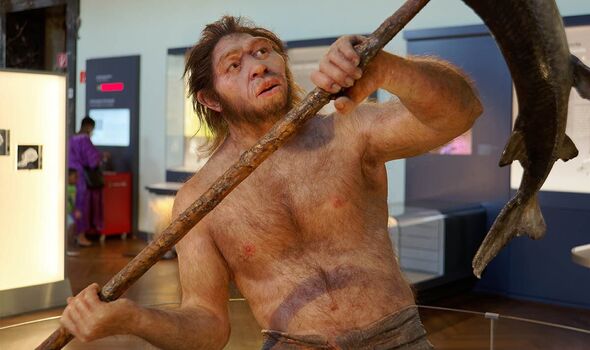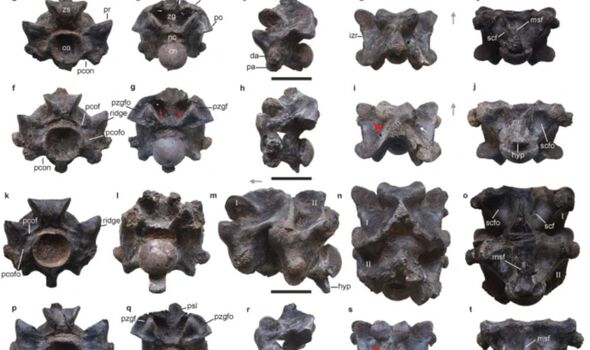
Erdogan: poll win a blow to immoral politics
March 31, 2014
GLOBAL ECONOMY-Europe, China factory sectors weaken in March; US stable
April 1, 2014Neandertals and modern Europeans had something in common: They were fatheads of the same ilk. A new genetic analysis reveals that our brawny cousins had a number of distinct genes involved in the buildup of certain types of fat in their brains and other tissues—a trait shared by today’s Europeans, but not Asians. Because two-thirds of our brains are built of fatty acids, or lipids, the differences in fat composition between Europeans and Asians might have functional consequences, perhaps in helping them adapt to colder climates or causing metabolic diseases.
“This is the first time we have seen differences in lipid concentrations between populations,” says evolutionary biologist Philipp Khaitovich of the CAS-MPG Partner Institute for Computational Biology in Shanghai, China, and the Max Planck Institute for Evolutionary Anthropology in Leipzig, Germany, lead author of the new study. “How our brains are built differently of lipids might be due to Neandertal DNA.”
Ever since researchers at the Max Planck sequenced the genome of Neandertals, including a super high-quality genome of a Neandertal from the Altai Mountains of Siberia in December, researchers have been comparing Neandertal DNA with that of living people. Neandertals, who went extinct 30,000 years ago, interbred with modern humans at least once in the past 60,000 years, probably somewhere in the Middle East. Because the interbreeding happened after moderns left Africa, today’s Africans did not inherit any Neandertal DNA. But living Europeans and Asians have inherited a small amount—1% to 4% on average. So far, scientists have found that different populations of living humans have inherited the Neandertal version of genes that cause diabetes, lupus, and Crohn’s disease; alter immune function; and affect the function of the protein keratin in skin, nails, and hair.
In the latest study, published online today in Nature Communications, Khaitovich and his international team analyzed the distribution of Neandertal gene variants in the genomes of 11 populations from Africa, Asia, and Europe. They found that Europeans inherited three times as many genes involved in lipid catabolism, the breakdown of fats to release energy, from Neandertals as did Asians. (As expected, Africans did not carry any of these Neandertal variants.) The difference in the number of Neandertal genes involved with lipid processing was “huge,” Khaitovich says. The study also offers another example of the lingering genetic legacy left in some people today by the extinct Neandertals.
While the team doesn’t know the function of those Neandertal gene variants, it began to search for their influence by examining brain tissue from the prefrontal cortex of 14 adults of European, African, and Asian descent, as well as 14 chimpanzees. Although Khaitovich thinks that the Neandertal genes affect the composition of fat throughout the body, the researchers focused on brain tissue first because it contains so many fatty acids—and was available from a brain tissue bank. “There is no [body fat] tissue bank for different populations,” he says.
The team found that Europeans had differences in the concentration of various fatty acids in the brain that were not found in Asians or chimpanzees, which suggests they had evolved recently. The Europeans also showed differences in the function of enzymes that are known to be involved with the metabolism of fat in the brain.
Now the team is trying to figure out what the fatty acids do in the brain and how differences in their concentration might affect function. “We think it’s a very strong effect with very profound physiological changes,” Khaitovich says. “Otherwise, we wouldn’t see it in the brain tissue.”
He suspects that these fatty acid genes were advantageous for modern humans and may have helped Neandertals and, later, Europeans adapt to colder environments. The gene variants may have boosted metabolism, perhaps helping Europeans and Neandertals break down fat more rapidly to get energy to survive in colder climates in northern Europe. The findings also show how one type of human could take an evolutionary shortcut and inherit an advantageous gene from another group through “introgression,” or interbreeding, rather than spend tens of thousands of years evolving a way to adapt to a new habitat themselves. Today, though, these fatty acids are also implicated in diseases that are part of the so-called “metabolic syndrome”—obesity, diabetes (through the metabolism of sugars), high blood pressure, and cardiovascular disease (through the metabolism of cholesterol and triglycerides), the authors say.
“Clearly much more has to be done on the functionality of this, but it’s tempting to think it’s linked with some of the differences in sugar metabolism that have been picked up already,” writes paleoanthropologist Chris Stringer of the Natural History Museum in London, who is not a member of the team, in an e-mail. “Neandertals might have had adaptations to get through the stress of northern winters that moderns could pick up through introgression.”



